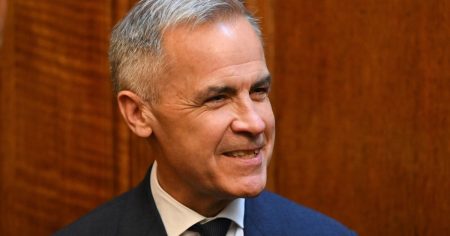The Impact of NOAA Firings on Weather Forecasting and Public Safety
Introduction: Understanding the Role of NOAA and Recent Firings
The National Oceanic and Atmospheric Administration (NOAA), a pivotal agency responsible for weather forecasting, has recently faced significant staffing cuts under the Trump administration. These firings, impacting 586 probationary employees, including 108 from the National Weather Service (NWS), have raised concerns about the agency’s ability to protect public safety during extreme weather events. NOAA’s role extends beyond routine forecasting to include tracking hurricanes, tornadoes, and other life-threatening phenomena, making these cuts particularly alarming as the nation approaches tornado and hurricane seasons.
The Immediate Impact on Weather Forecasting Capabilities
The layoffs have severely affected the NWS, which was already grappling with over 600 vacancies. The abrupt reduction in staff, particularly in satellite operations, threatens the reliability of weather data crucial for accurate forecasting. Satellite operators play a key role in monitoring weather conditions, and their loss could impair the ability to issue timely warnings, affecting air safety, sea navigation, and emergency responses. This underpins fears about the agency’s ability to maintain 24/7 operations, especially in regional forecast offices now understaffed and overburdened.
Broader Consequences for Environmental and Economic Resilience
Beyond immediate forecasting, the firings could hinder NOAA’s long-term missions, including climate research and environmental protection. Facilities like the Great Lakes Environmental Research Laboratory and satellite stations face closures, disrupting vital services. The timing of these cuts, as critical weather seasons loom, exacerbates concerns about public safety and economic impacts on industries like fishing and aviation. Former officials highlight the potential chaos and confusion, underscoring the lifeline NOAA provides to the public.
Political and Public Backlash Against the Firings
The layoffs have drawn sharp criticism from Democrats and former NOAA officials, who allege misuse of agency data and the politicization of nonpartisan roles. Protests outside NOAA headquarters reflect growing anxiety among employees and the public about the future of weather services. The union fears additional layoffs, with up to 800 more staff potentially affected, deepening uncertainty and undermining morale. This political interference threatens NOAA’s mission and the trust it has built as a reliable source of critical information.
NOAA’s Response and the Ongoing Commitment to Its Mission
Despite the controversy, NOAA emphasizes its dedication to providing essential services, though it has declined to comment on the specifics of the firings. The agency continues to supply weather information and warnings, a testament to its enduring commitment. However, the loss of experienced scientists and the potential closure of facilities signal a challenging era for NOAA, as it strives to balance its mission with reduced resources and a shifting political landscape.
Looking Ahead: The Implications for Public Safety and NOAA’s Future
The firings at NOAA are not merely an employment issue but a public safety concern. As the agency navigates these challenges, the focus remains on preserving its ability to protect and inform the public. The implications of these cuts extend beyond immediate forecasting to long-term environmental resilience, highlighting the importance of NOAA’s role in safeguarding lives and promoting economic stability. As the nation faces increasing climate challenges, the need for a robust and reliable NOAA is more critical than ever.















